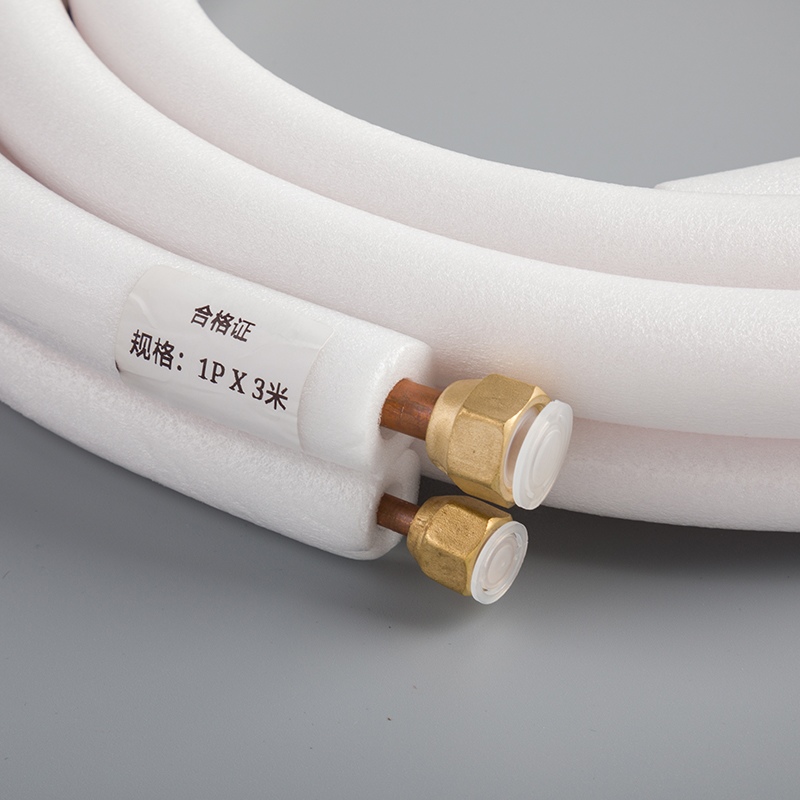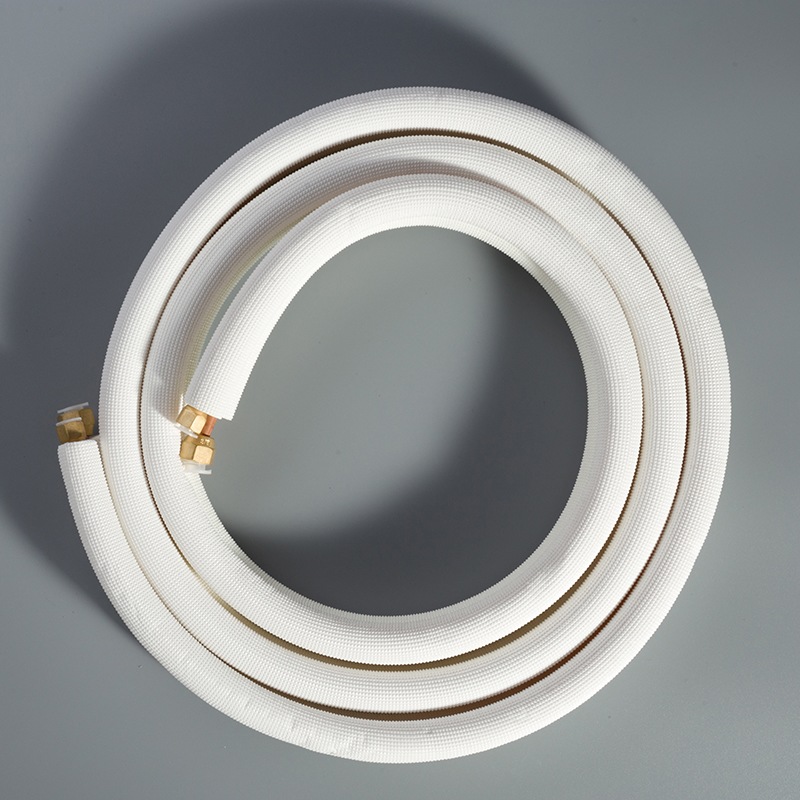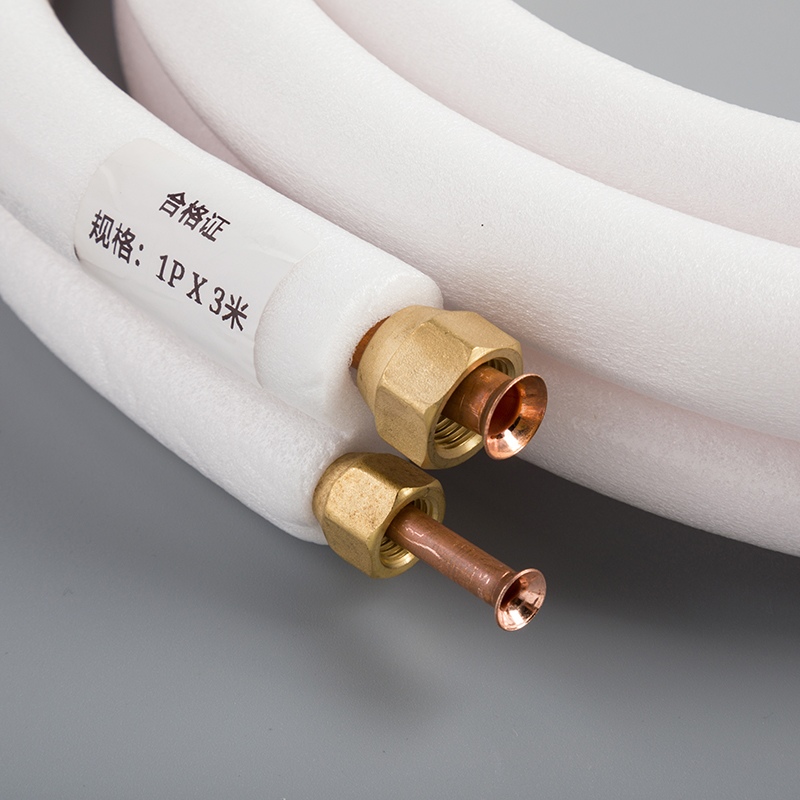How to Properly Insulate Copper Pipes in Your AC Unit

Insulating copper pipes in AC units is essential for maintaining energy efficiency and preventing condensation issues. Proper insulation not only saves on energy costs but also ensures the longevity of your HVAC system. By understanding the benefits of insulating copper pipes, homeowners can optimize their cooling systems effectively. This blog will provide a detailed guide on How to properly insulate copper pipes in residential AC units, emphasizing the significance of each step in the process.
Materials and Tools Needed

Essential Materials
Types of Insulation Materials
Closed-cell Elastomeric Foam: Known for its flexibility and low thermal conductivity, this type of insulation is ideal for AC lines to prevent condensation effectively.
Closed-cell Polyethylene Foam: Offers good thermal insulation properties and is commonly used for various temperature ranges in AC units.
Mineral Wool: A versatile material that provides excellent thermal performance and is suitable for insulating AC pipes efficiently.
Fiberglass: Widely used due to its affordability and ease of installation, offering decent thermal resistance for copper pipes.
Additional Materials
Tape: Essential for securing the insulation around the pipes and ensuring a tight fit to prevent heat transfer.
Sealant: Helps in sealing joints and gaps to maintain the integrity of the insulation and prevent air leakage within the system.
Required Tools
Cutting Tools
Scissors: Used to cut insulation materials with precision according to the measurements of the copper pipes.
Utility Knife: Ideal for cutting through thicker insulation or making precise adjustments during installation.
Measuring Tools
Tape Measure: Essential for accurately measuring the length and diameter of the copper pipes before cutting the insulation materials.
Safety Equipment
Gloves: Protect your hands from any sharp edges or materials while handling insulation or tools.
Goggles: Ensure eye protection when cutting or handling materials to prevent any debris from entering your eyes during the process.
Preparatory Steps
Safety Precautions
Activating the AC unit shutdown is the initial safety measure to take before proceeding with any insulation work.
Ensuring adequate ventilation in the workspace is crucial to prevent any potential exposure to harmful fumes or lack of fresh air during the insulation process.
Measuring the Pipes
Determining the precise length and diameter of the copper pipes is essential for accurately cutting and fitting the insulation materials.
Recording these measurements diligently guarantees that the insulation will be tailored perfectly to each section of the copper pipes, ensuring optimal coverage and efficiency.
Insulation Process

Cutting the Insulation
To properly insulate copper pipes, one must begin by measuring and marking the insulation material accurately. This step ensures that the insulation fits snugly around the pipes, minimizing heat transfer and maximizing energy efficiency. Once the measurements are in place, cutting the insulation to the correct size is crucial for a precise fit.
Applying the Insulation
Positioning the insulation around the pipes is a critical step in ensuring optimal performance. By wrapping the insulation securely, homeowners can prevent heat loss and maintain consistent temperatures within their HVAC system. Securing the insulation with tape or sealant further enhances its effectiveness, creating a barrier against external elements that could impact cooling efficiency.
Sealing the Joints
Ensuring all joints and seams are properly sealed is essential for maintaining the integrity of the insulation. By carefully inspecting each connection point, individuals can identify any gaps that may compromise efficiency. Applying additional sealant where necessary guarantees a tight seal, preventing air leakage and preserving the insulated copper pipes' functionality.
Final Checks and Maintenance
Inspecting the Insulation
Checking for any loose or improperly sealed areas
Efficient Systems highlights that insulated pipes help reduce energy lost during water travel, ensuring that the intended temperature is maintained throughout the system. By inspecting the insulation regularly, homeowners can identify any loose sections or improperly sealed areas that may compromise the efficiency of their HVAC system.
Insulation significantly reduces energy consumption by maintaining the intended temperature of the refrigerant, as mentioned by Aeroflex USA. This practice not only enhances energy efficiency but also prolongs the lifespan of the AC unit.
Making necessary adjustments
Periodic inspection of the insulation is crucial for identifying any areas that require adjustments. By promptly addressing loose or damaged insulation, individuals can maintain optimal thermal efficiency within their AC unit.
Efficient Systems emphasizes that replacing damaged or worn insulation is essential to prevent energy loss and ensure consistent performance. Regular maintenance ensures that the HVAC system operates at peak efficiency, reducing overall energy consumption and costs over time.
To ensure optimal efficiency and prevent condensation issues, it is crucial to properly insulate copper pipes in your AC unit. By following the detailed steps outlined in this guide, homeowners can maintain energy savings and extend the lifespan of their HVAC systems. Regular maintenance checks are essential for identifying any loose or damaged insulation that may impact performance. Remember, insulation integrity plays a significant role in reducing energy loss during water travel and maintaining consistent temperatures within your system.
See Also
Enhance Air Conditioner Performance with Copper Pipe Insulation
Benefits of Selecting Copper Pipes for Air Conditioners
The Importance of Pure Copper Pipes in Air Conditioning Efficiency
Exploring Optimal Insulation Options for Copper Pipes
The Revolutionary Impact of Pure Copper Pipes on Air Conditioning


